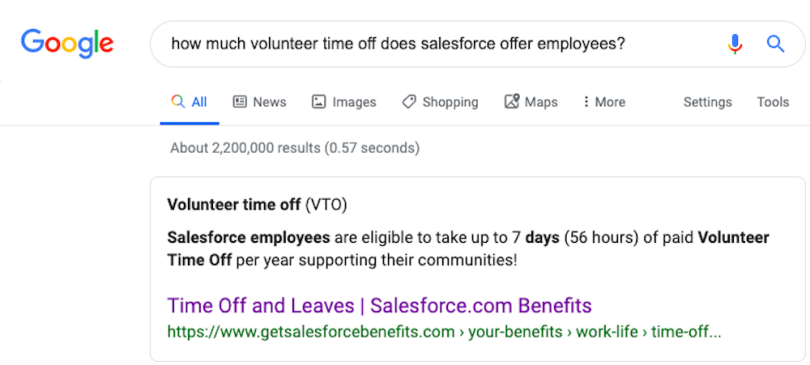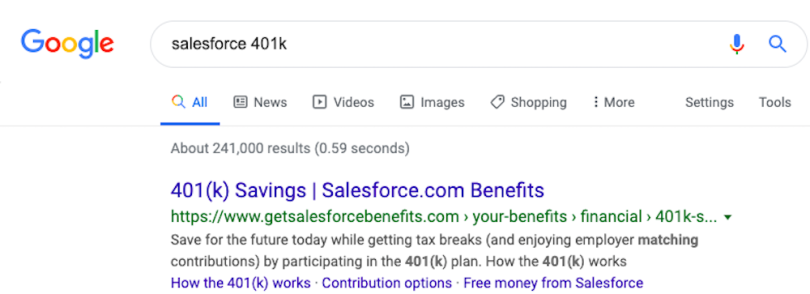After employees collect their holiday bonuses and finish out projects for the year, many of them will start looking for new jobs. At the same time, January is often when companies open up roles as annual budgets are re-allocated and growth goals are established for the year.
For recruiters and HR professionals, January and February are known to be some of the busiest months of the year for turnover and hiring. And if you wait until the new year to start planning your efforts, the competition will be stiff. Instead, get ahead of the game — and your competitors — now by planning out how and where you will attract candidates. Here are a few tips:
Winter Is Coming & So Is The Competition For Tech Candidates
Rather than starting to attract candidates in January — when all of your competitors are vying for their attention — begin now. With a few months left in 2019, it’s the perfect time to get in front of passive and active candidates before they go on vacation, and long before they start actively looking for jobs. Realistically, if you don’t have candidates in the pipeline by November for a role you want to fill before January, you need to assume those roles will not be filled until well after the new year. And even if you do have candidates in the pipeline by November, you still want to be one of the first employers candidates connect with when they start pursuing other opportunities in January. To help narrow your efforts in the upcoming months, we’ve provided a few key areas to focus on.
Sourcing Candidates

In order to recruit top candidates, you need to have an idea of where and how you are going to source them. Start by creating candidate personas for each of the roles you are hiring for — that includes the roles you plan to fill in the upcoming year. You’ll also want to clean up and organize all your recruiting data so you can report on your end of the year numbers, and start your 2020 reporting on a good foot. Once you have all this information, you’ll be able to identify the best ways to source candidates.
During your research, also do a deep dive into where your competitors are sourcing their candidates. While there may be a lot of competing employers on top job boards, networking platforms and social media sites are sourcing opportunities your competitors may overlook. Finding these missed opportunities can be as simple as searching “job board for [insert role]” or “hiring [insert role].” Also, do research from a job seeker's perspective by searching phrases like “fintech jobs near me” or “tech jobs near me” or “best paying companies.” These type of searches will show you where candidates land when they are looking for jobs.
Additionally, during this slower quarter, educate yourself on current and trending sourcing tactics. The algorithms and trends that dictate who, where and when candidates discover information about your company are complex to say the least, so keeping up with them will help you stay ahead of the curve. You can do this by taking a class on sourcing, learning about SEO and understanding Boolean search.
Talent Community

A talent community describes a group of both passive and active professional candidates connected by similarities in industry, company, job function or location. By creating or joining talent communities, employers are able to proactively nurture candidates before a role opens up.
One type of talent community is built from the candidates who seem perfect on paper or even in-person, but for whatever reason, it’s not the right time or circumstance for either the individual or your company to hire them. Rather than losing the prospective candidates altogether, more and more companies recognize the value of keeping in close contact with the people who have shown interest or applied to a job at your company. This type of talent community is hyper-specific to your company and its open roles.
Additionally, there are a number of third-party talent communities that companies can use to find candidates. Some of the large, aggregated talent communities include LinkedIn, Facebook Jobs and Google for Jobs, where you can search thousands of candidates by name, location, industry and current and past employers. These resources are great for broad searches. While they may cost little-to-nothing, you can expect to spend a large amount of time sifting through thousands of candidates, drafting outreach emails and following up until they either apply or ghost you completely.
Another option, that’s generally more cost- and time-effective, is to get involved in an already established talent community that is built upon professionals connecting by their current industry, company, job function or location. Within these communities, you’ll want to regularly contribute to the topics of interest. This will not only position you as an expert in your industry, but people are much more likely to pursue a career at a company where they know an insider and have some background knowledge.
If you create and join talent communities in the upcoming months, your company will be on track to source and nurture candidates before your roles open in 2020. Doing so will not only save you time and resources, but it will help you get ahead of the competition.
Candidate Matching

With how much time and resources go into building a talent community, it’s almost unbelievable that there isn't technology to automate all this work. Oh wait...there is, and it’s called candidate matching.
While candidate matching isn’t a new practice, advancements in artificial intelligence and smart matching technologies have sparked development of a few new tools that are just starting to make their way into the HR and recruiting sphere. These tools are able to recommend top candidates based on the criteria you have set in a job description, such as experience, skills and location to name a few.
As these tools continue to evolve over the next few years, they will only become more accurate and specific with their candidate recommendations. Companies that invest in such products today will be much more efficient at identifying top candidates before their competitors do, not to mention save a wealth of time and resources recruiting.
As the skills gap for high-tech roles continues to widen, the race to attract top tech candidates will only become more fierce, so anything to help source and connect with candidates more quickly will help companies beat out the competition for top talent.
Reboot Your Recruitment Marketing Strategy Now
Once you know where and how you will attract candidates, you’ll want to start focusing on your recruitment marketing strategy. Why? Marketers have this concept called The Rule of Seven, which basically states that a prospect — in this case a prospective candidate — needs to come into contact with a brand — or employer brand — seven times before they recognize the brand and take action.
As candidates and companies are laser focused on hitting end-of-the-year goals before taking time off for the holidays, it is a great time to create that stellar recruitment marketing and employer branding content you’ve been brainstorming about but haven’t had the time to do.
By working on your recruitment marketing efforts now, prospective candidates will be much more familiar with your company as a future employer when January comes, whereas your competition will be several weeks, if not months, behind. And lucky for you, Q4 tends to be the slowest hiring period.
Here are a few essential recruitment marketing tactics to invest your time in this quarter that will pay off in the new year.
Recruitment Events

Hiring or recruitment events are notorious among candidates for being boring at best and stressful at worst. But believe it or not, recruitment events are making a come back and in a big way — but not as your standard job fair or networking event.
Companies are getting more and more creative with their hiring events and how they incentivize candidates to attend. Companies have begun hosting events at hip, local restaurants or in their offices, offering free food and beverages, giving out free swag and providing fun and educational activities. Whatever you decide to do, it’s important to create an experience that reflects the mission and values of your company and culture. Create an event that your current employees would want to attend because it is bound to attract candidates that would work well with your culture. This also helps boost attendance among your current employees, which further reinforces the type of culture your company has and provides candidates with more opportunities to meet with their prospective colleagues.
Also, in a world where social media is one of the top sources for people to obtain and share information, making your event Instagram-friendly certainly isn’t going to hurt your employer brand. Provide attendees with cool swag that they will want to share with friends and sport in public; this will boost your employer brand and get people talking about the event and your company. Talk about grassroots recruitment marketing!
Above everything, you want to provide attendees with a memorable experience that makes them feel welcome to apply for a role or at least join your talent community to learn about future roles.
Social Media Recruiting

As your team begins to take time off for the holidays, it’s important to have a plan in place for recruiting on social media. Nearly 80% of active and passive candidates utilize social media during their job search, so you want to make sure content is being posted about your open roles and employer brand even when your team isn’t in the office. For candidates, social media has been an incredibly helpful resource for finding organic content that reflects a company’s true employer brand and company culture. While you may think all of your social content is already carefully curated and tailored for candidates, there are new ways social media-savvy candidates are discovering information about your company that you probably didn’t even know existed.
A lot of candidates want to know basic information about your company, like what people wear on a daily basis, what kinds of events and activities you do; basically anything that lets them know this is a place they would enjoy working at. Candidates today are learning about these things by searching social media content posted by your employees. This is done by searching for content posted from the address of your office, hashtags related to your company as well as any news-worthy content they can find.
In order to truly know your employer brand and how candidates view it, take some time during this slow quarter to take a class on social media, read about social media platform updates and talk to people who are experts in the field. However you decide to curate your employer brand on social media, make sure you do so regularly and that you schedule posts throughout the holidays so when candidates are spending time on social media, your content will populate at the top of their feed.
Career Page

Similar to how marketers have customer or prospect pipelines, recruiters should have talent pipelines that consider every step of the candidate’s journey during the recruitment process. And many active and passive candidates utilize social media during their job search, it’s only the beginning of the talent pipeline. Don't put all your eggs in the social media basket. You need to think about the process from A to Z so you provide candidates all the information they need before applying and they don't lose interest along the way.
While social media and job boards are a great place for candidates to initially learn about a company and their open roles, they aren’t typically optimized to share information on the topics candidates really care about — culture, values and benefits. A company's career page is one of the best ways to share this information and give candidates a better sense of what it would be like to work at your company.
It’s astounding how many companies still do not have an enticing career page on their website. In the current candidate-driven job market, having a well-designed career page will help candidates better connect with prospective employers and determine whether or not it’s a good fit before they even apply. That’s why it’s particularly important to have a well-developed career page before the holidays because a lot of people will start their job search during the holidays from the privacy of their homes and with the support of friends and family encouraging them to pursue a more fulfilling job.
Not only that, but career pages provide another opportunity that job boards and social media platforms can’t — search engine optimization (SEO). Optimizing your career page for search engines will help your open roles land on the first page of search engines, like Google, when candidates start their job search.
Recruitment Videos

Recruitment videos are an essential part of any recruitment marketing strategy. In fact, when a job posting contains a recruitment or informational video about the company, the posting is viewed 12% more and receives 34% more applicants than those without videos. Unlike recruitment events or career pages, recruitment videos can be repurposed across the internet to reach candidates on the platforms they use most.
Also, videos are customizable to help companies get the most bang for their buck. For companies strapped for budget and resources, creating a general video about the company and its culture can be repurposed over and over again for every role that opens up. If you’re struggling to hire specific roles, it may be worthwhile to create a video about a certain role or department that is more tailored to specific job candidates.
When deciding how to prioritize video in your recruitment strategy, keep in mind it is continuing to grow in popularity with viewership predicted to be 80% of consumer traffic online in 2020. The longer you wait to invest in video content, the harder it will be to attract candidates away from your competitors that have already created enticing recruitment videos.
Employee Spotlights

One of the most valuable resources you have as a recruiter are your current employees. Candidates find current and past employees to be one of the most reliable resources for learning about an employer and company culture, which is why employee reviews are the fourth most sought after information in a job description.
While you can’t get all of your employees to write reviews about your company, you can ask a few of your top performers and experienced employees to share their thoughts in the form of an employee spotlight.
Spotlights can be as simple as a brief quote and picture that you can repurpose on social media and your career page, to something a bit more robust like a video or in-depth interview. While there’s no right or wrong way to spotlight your employees, the higher quality and more specific content you create, the greater impact it will have on prospective candidates. If you get started now, you’ll have plenty of time to plan the content and execute it before your 2020 recruitment starts.
What Candidates Expect From Employers In 2020
There’s no doubt that millennials, and now Gen Zers, have significantly altered the workforce as we know it. Unlike generations in the past, they set high expectations for employers and don't care to establish a several decade career at one company. Instead, these generations care about companies that offer flexible work schedules and time off, create meaningful careers and promote diverse and inclusive workplaces.
If you don’t currently offer or promote any of these attributes, you need to take a critical look at the value you have to offer candidates as their employer. Let’s take a further look at how you can prepare for candidate expectations in 2020.
Perks & Benefits

Did you know 89% of 18-34 year old employees care more about great perks and benefits than they do about pay raises? But what perks and benefits could possibly be better than a pay raise? Trends indicate that, come 2020, the perks and benefits candidates will be looking for include: financial wellness, mental healthcare, student loan repayment, transgender-inclusive healthcare, technology benefits, family planning, flexible schedules, commuter benefits, paid leave and pet benefits.
It’s one thing to provide exceptional perks and benefits, but if candidates aren’t aware of them, it’s like they don’t exist. Here are a few ways that you can effectively communicate your perks and benefits to attract top talent:
Optimize Your Career Page
We mentioned earlier the importance of optimizing your career page for search engines, and this is a great example of why that is so important. Take this real life example from Salesforce. On Salesforce’s career page, they include a section about the perks and benefits they offer employees. They utilize specific keywords like ‘volunteer time off’ and ‘401(k) savings’ in their headers, which attracts traffic from candidates who search for those keywords with the company name as you can see below:

Because the company optimized the page for search engines, their career page is not only the first result on Google, but it is in a featured snippet box, meaning it appears before all of the other organic search results.
In this second search for ‘salesforce 401k,’ they didn’t get a featured snippet, but they are the first search result for that inquiry. Plus, they have anchor links below the meta description that provide even more specific information on the topic.

Share Perks & Benefits on Job Posts and Social Media
Anywhere that you share information about open roles, company culture and employer branding, you should also discuss your company’s perks and benefits. This will help distribute this information to both active and passive candidates early in the recruitment process — long before they land on your career page.
Utilize Platforms that Optimize for Perks & Benefits
While all of the major job boards and recruitment platforms allow candidates to search by job title, industry and location, none of them allow for candidates to search by the perks and benefits a company offers. Well, all but one. On each of Built In's eight local tech communities, there is an extensive navigation tool that allows candidates to search for companies based on their perks, tech stack, company size, funding and industry. We're not biased, but we've heard candidates are a big fan of this feature.
Diversity and Inclusion

More than ever, candidates care if companies actually foster a diverse and inclusive (D&I) culture — so much so that two out of three candidates actively look for companies that have diverse workplaces. Not only that, but 85% of CEOs whose work cultures are diverse and inclusive notice increased profits.
While this is a major topic among recruiters and HR professionals, building a diverse and inclusive workforce doesn’t happen overnight. It takes months, or even years, of hiring the right employees and fostering a workplace where everyone feels welcome and included. And if you’ve pushed off prioritizing D&I until your company is bigger, you certainly haven’t done yourself any favors because changing a culture is significantly harder than building one.
No matter how much effort it takes, prioritizing D&I at your workplace is no longer optional — and it really never should have been. There are likely areas for improvement you haven’t considered before such as allowing candidates to share their preferred pronouns and asking them for feedback to make your application and interview process more accessible. By taking time to focus on D&I now, you’ll begin to notice improvements before the new year rolls around so when candidates ask you about how diverse and inclusive your company is during the recruiting process (more than half of the candidates will ask about diversity and inclusion during the interview, by the way) you will be able to provide them with concrete evidence for how your culture is improving its diversity and inclusion efforts. You can even highlight your D&I efforts on your career page and social media channels.
Keep in mind that nobody expects you to be an expert on this complex subject matter, but it’s critical that you, as a person in HR and recruiting, continue to learn, grow and share insights with the company. And don’t feel like you need to do this alone. Start a diversity and inclusion committee or bring in an expert on the matter to get the ball rolling. For more ideas, check out how 13 real companies boost diversity and inclusion efforts at their company.
Q4 has just begun, meaning you still have plenty of time to kickstart your 2020 recruiting efforts. If you procrastinate much longer, you'll fall behind and start out the new year on the wrong foot. By starting now, your employer brand will be top of mind for both active and passive candidates long before your competition initiates their hiring strategy for next year.




